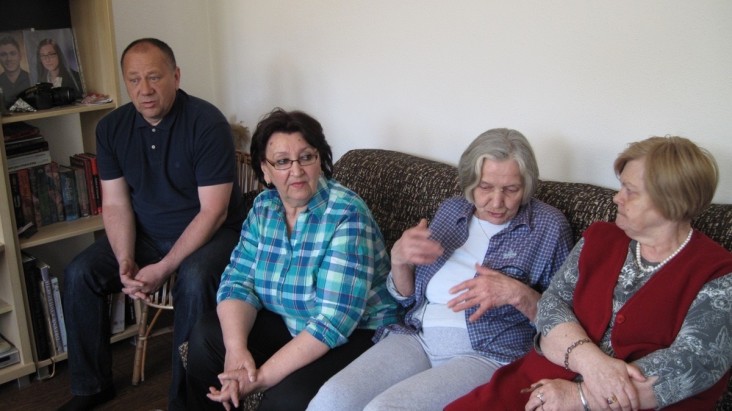Speeches Shim

March 2017—The poor state of several apartment buildings in Tesanj, an otherwise picturesque town in the Tuzla canton of Bosnia and Herzegovina, left residents uncomfortable and cold. They grew accustomed to shabby-looking homes with leaky roofs and inadequate insulation.
Home did not feel as “homey” when apartment owners like Abzia Hasanovic were cold. “Before, I had to wear a coat in my flat,” she said.
With the support of USAID, Habitat for Humanity brought together people from the community and the public and private sectors to provide a better home for Hasanovic. The Residential Energy Efficiency for Low-Income Households project began in August 2012 as a way to promote collaboration between municipalities, financing institutions, construction and maintenance companies, and homeowners while introducing innovative financing solutions to leverage public and private funding. The project works directly with individual homeowners or homeowner associations.
The project facilitated new partnerships and empowered the local community to join forces in a dilemma that might have otherwise been left for Hasanovic to handle on her own. Thanks to training on energy efficiency, residents in Hasanovic’s neighborhood started to brainstorm concrete steps that could improve their homes, save money, and earn money back by selling unused energy to the utility.
After the training, homeowners took action. Together, they met with the entrepreneurial president of the homeowner’s association, joining forces to secure subsidies from the municipality and a loan from the local bank to improve the energy efficiency of apartments. They then used their new skills to contract and manage the construction with private sector companies.
The residents’ hard work paid off and their reward been a substantial improvement to their quality of life. The professionally insulated walls and dry roofs lend a new sense of security and warmth.
Locals in Tesanj have already started to enjoy the benefits of energy efficiency intervention. They are saving on electricity bills, paying 20 percent less in 2016 than they paid in 2015, enabling them to open up rooms that were previously closed to conserve heat. The project also increases energy security, allowing residents to learn about the sources of energy powering their homes and ensure all proper parties are in place to continue providing the necessary services.
Residents of Hasanovic’s apartment building agree that this work brings both practical improvements and hope for the future. The project was inspired by an earlier USAID-funded project on residential energy efficiency in Macedonia. In Armenia, the project targets similarly vulnerable housing sectors and reduces the impact of escalating energy prices for families. Apartment residents no longer return to a chilled complex in the evening, and with a newly renovated home, Hasanovic, and others like her across the region, can finally rest easy.
More than 50 families in Bosnia and Herzegovina and 20 buildings in Armenia have benefited from the project as well as 400 households in Macedonia. The project is scheduled to be extended until 2019 and reopened in Macedonia.
LINKS

Comment
Make a general inquiry or suggest an improvement.